Abstract
A diverse collection of xanthine-metabolizing bacteria was examined for xanthine-, 1-methylxanthine-, and 3-methylxanthine-oxidizing activity. Both particulate and soluble fractions of extracts from aerobically grown gram-negative bacteria exhibited oxidation of all three substrates; however, when facultative gram-negative bacteria were grown anaerobically, low particulate and 3-methylxanthine activities were detected. Gram-positive and obligately anaerobic bacteria showed no particulate activity or 3-methylxanthine oxidation. Substrate specificity studies indicate two types of enzyme distributed among the bacteria along taxonomic lines, although other features indicate diversity of the enzyme within these two major groups. The soluble and particulate enzymes from Pseudomonas putida and the enzyme from Arthrobacter S-2 were examined as type examples with a series of purine and analogues differing in the number and position of oxygen groups. Each preparation was active with a variety of compounds, but the compounds and position attacked by each enzyme was different, both from the other enzymes examined and from previously investigated enzymes. The soluble enzyme from Pseudomonas was inhibited in a competitive manner by uric acid, whereas the Arthrobacter enzyme was not. This was correlated with the ability of Pseudomonas, but not Arthrobacter, to incorporate radioactivity from [2-14C]uric acid into cellular material.
Full text
PDF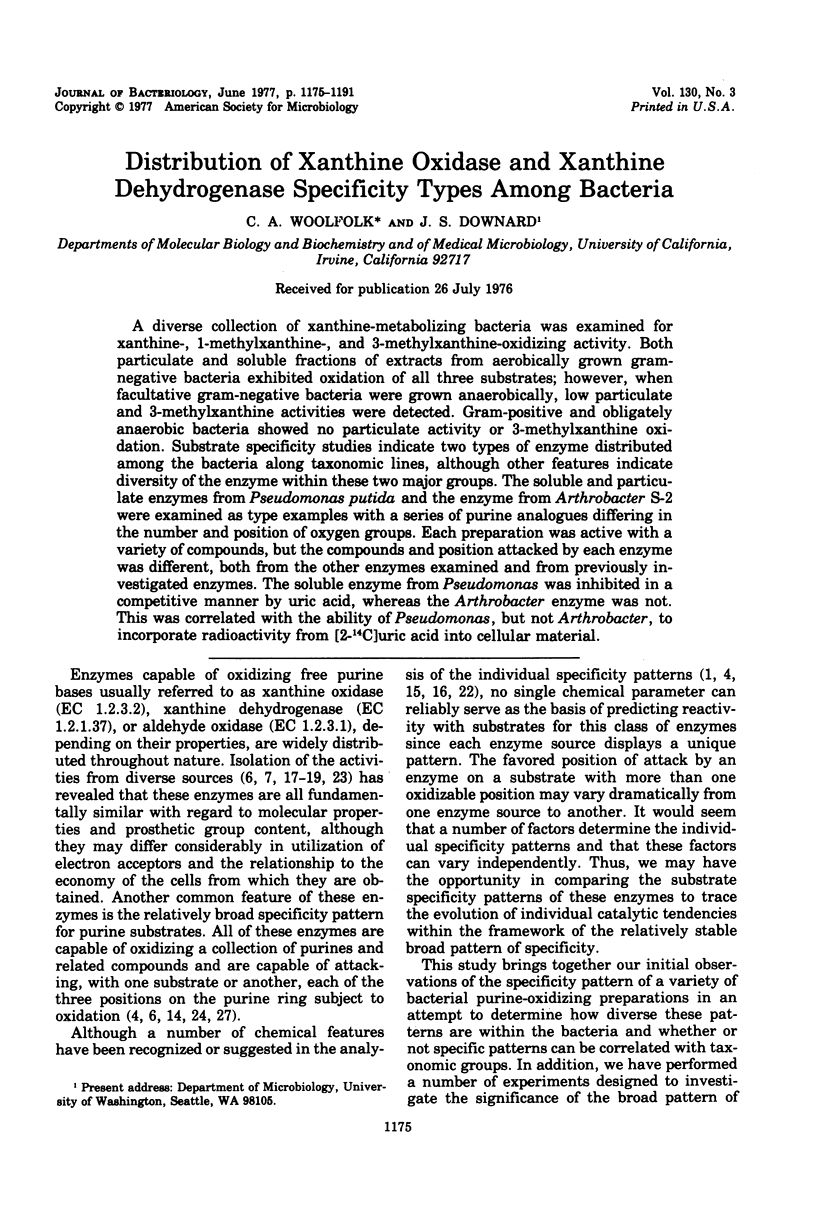
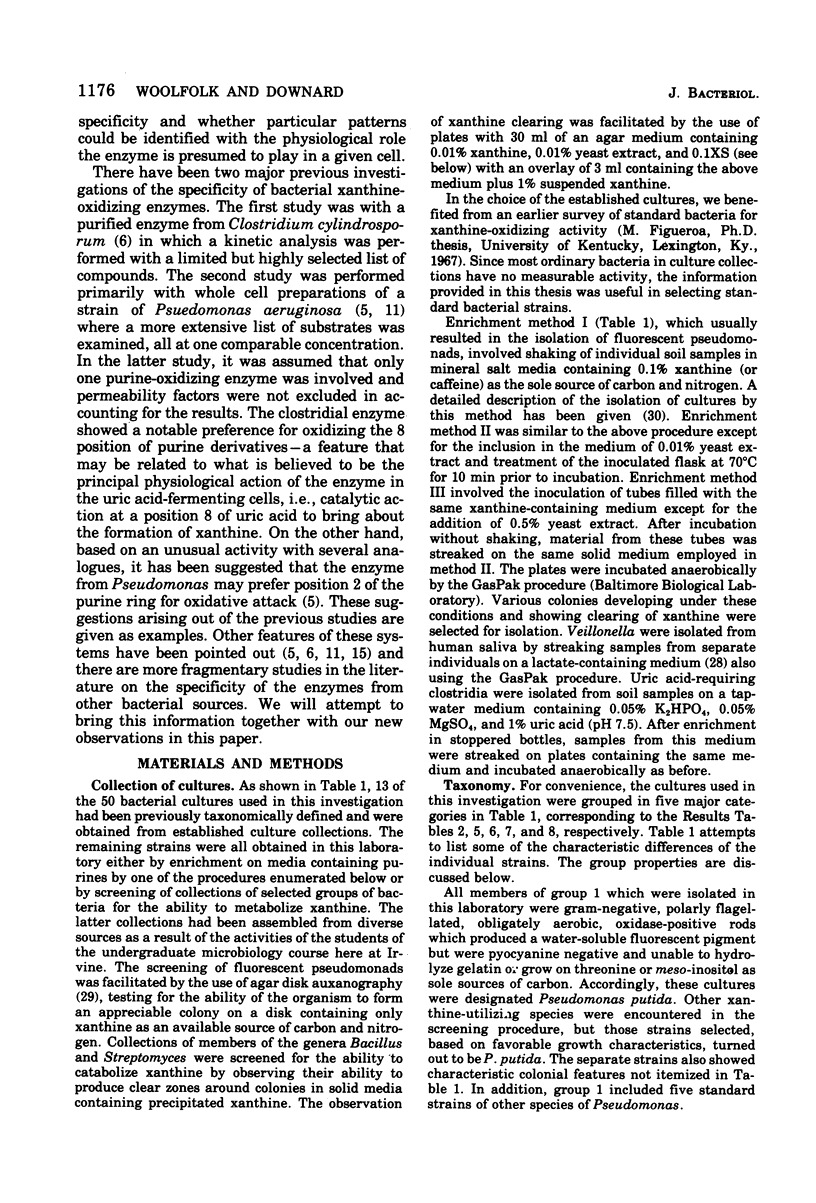
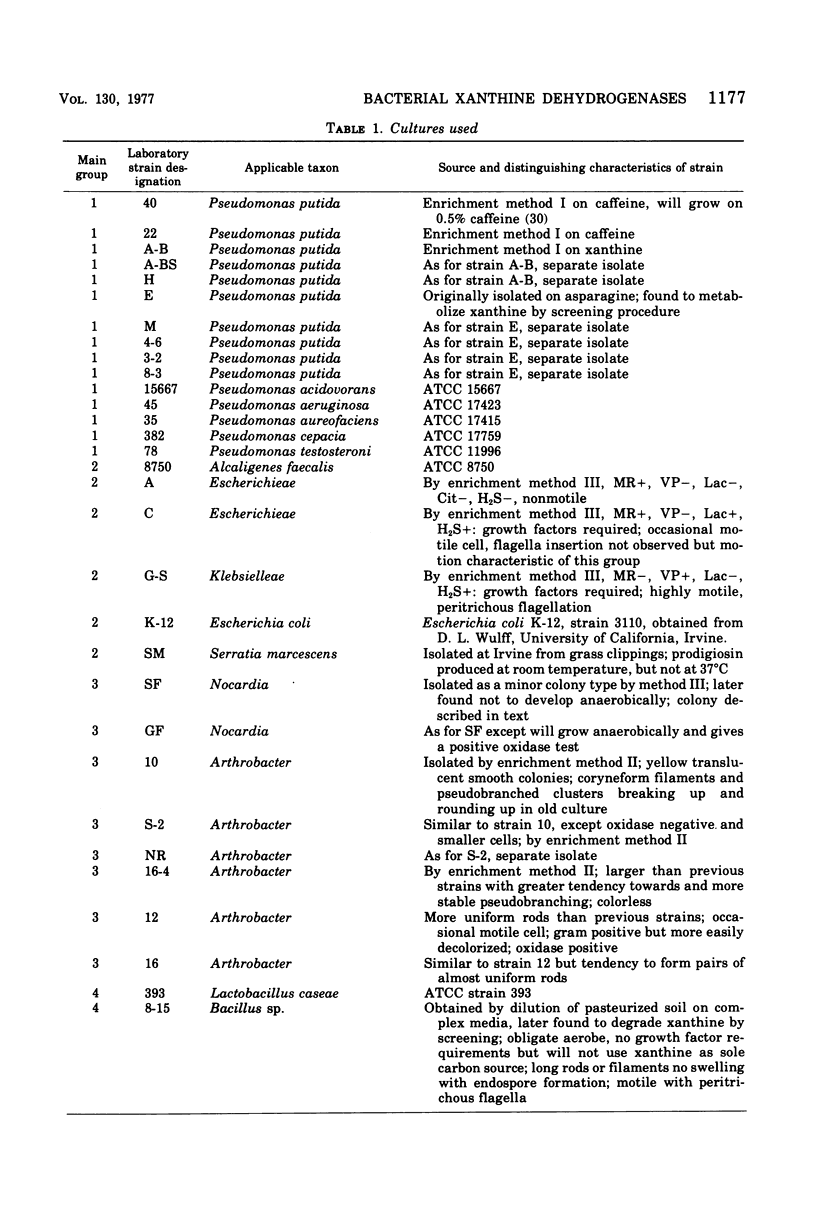
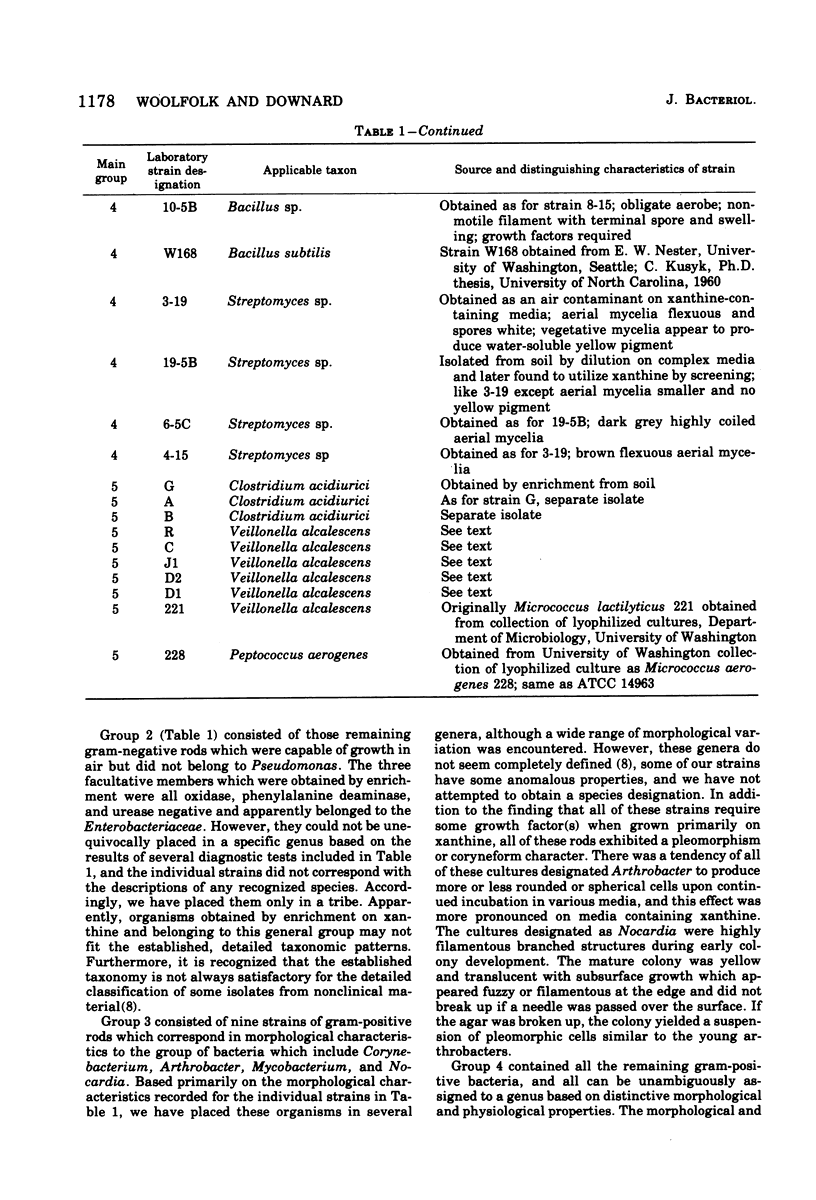
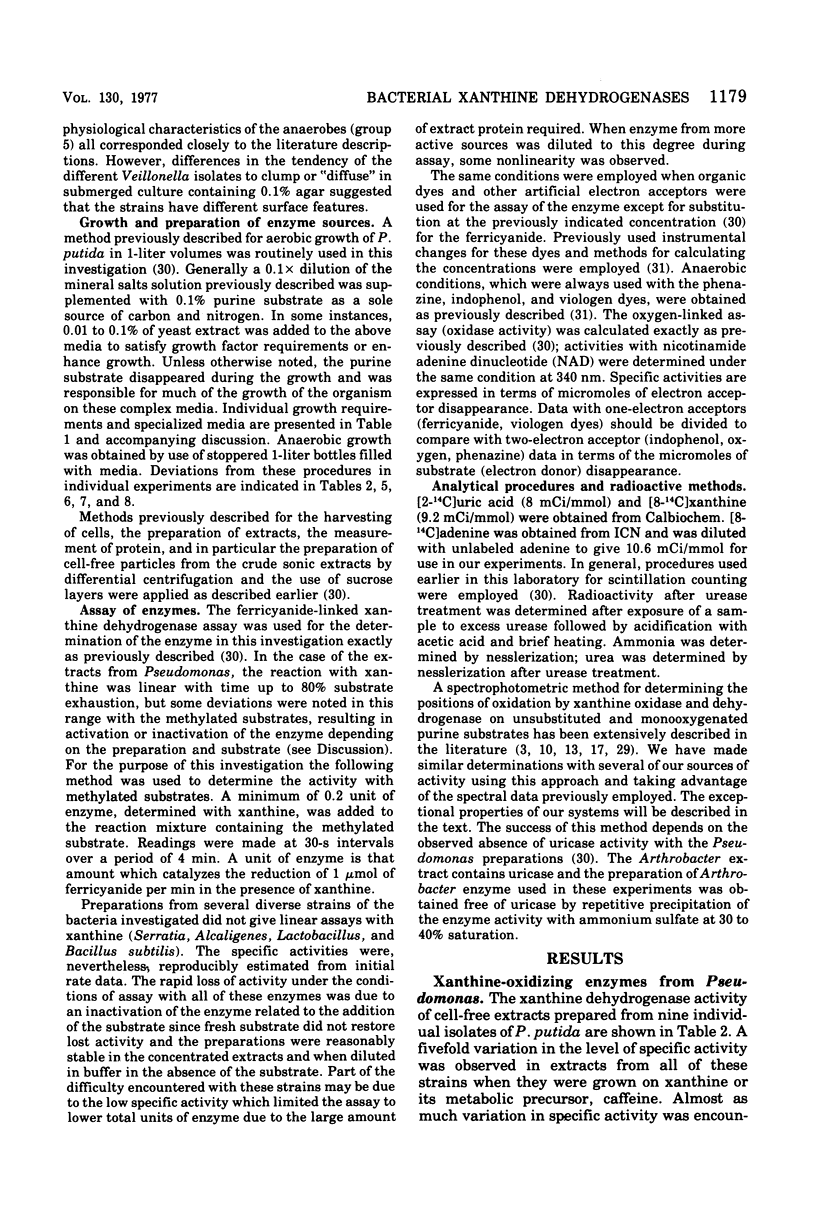
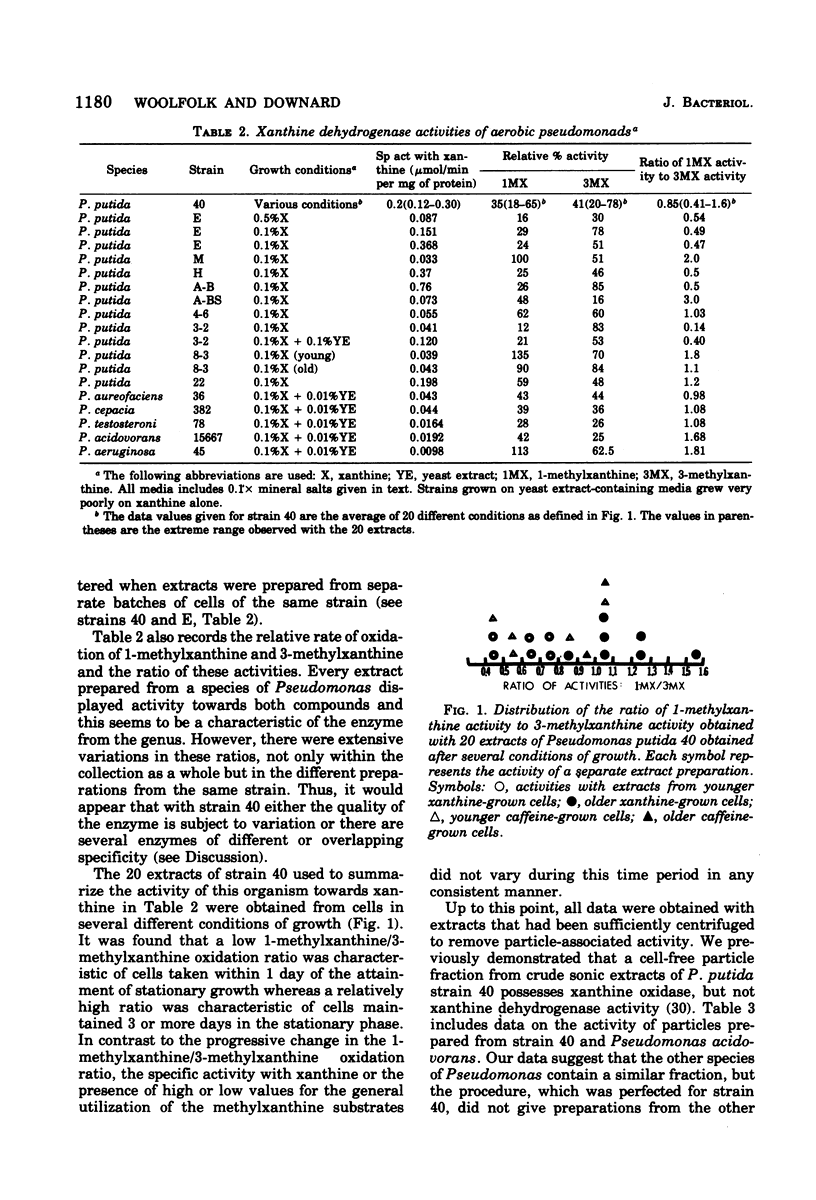
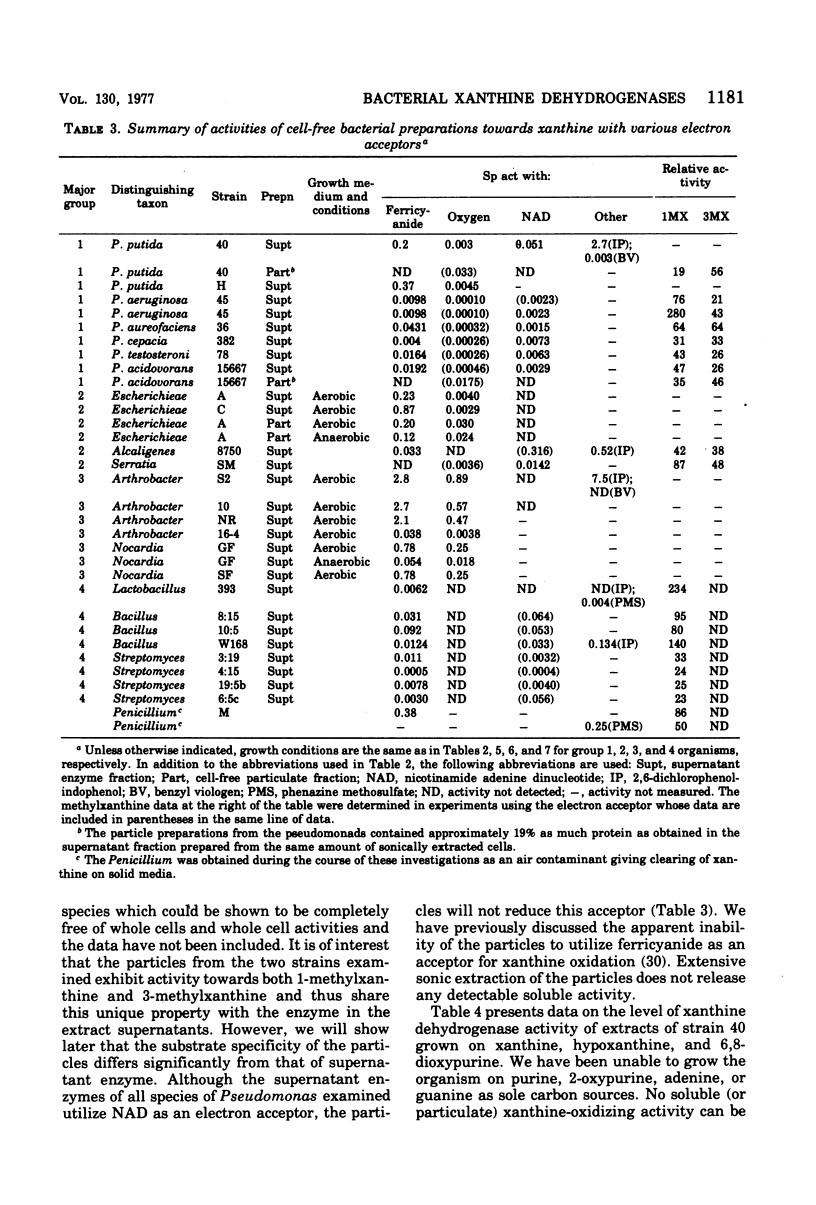

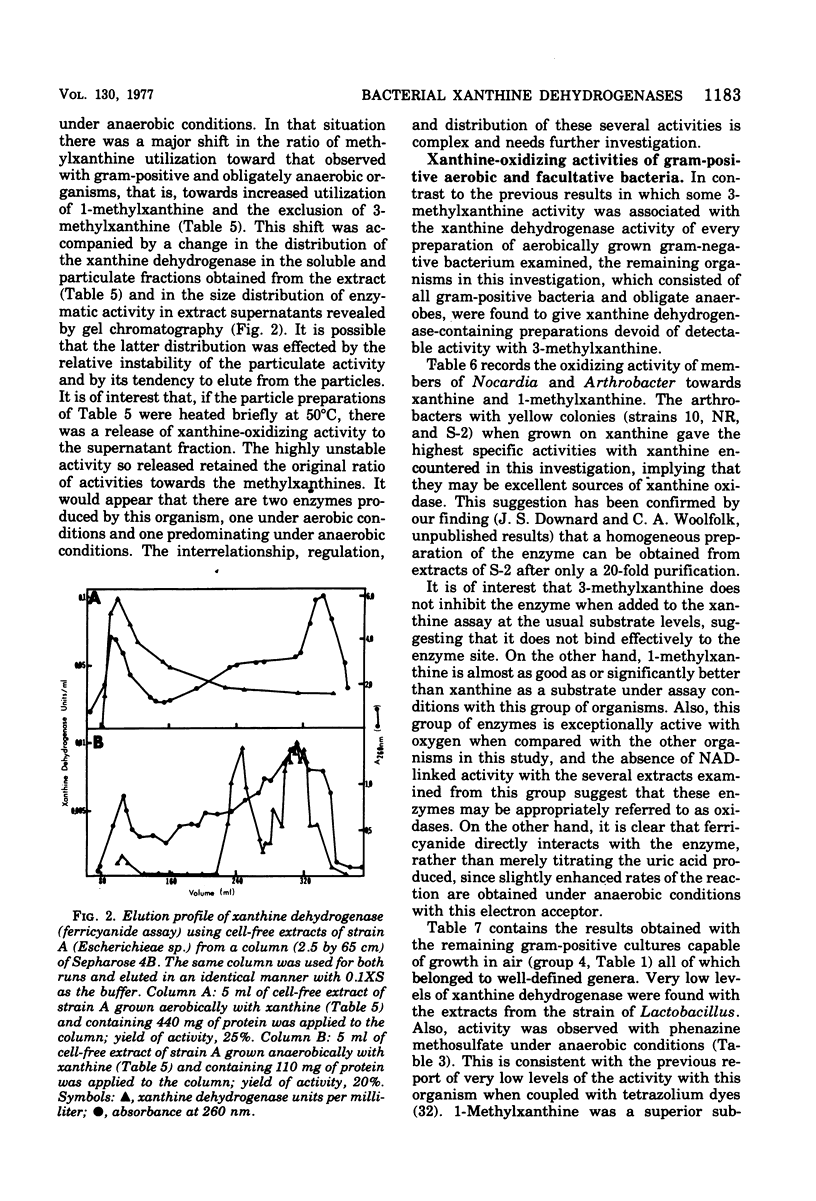
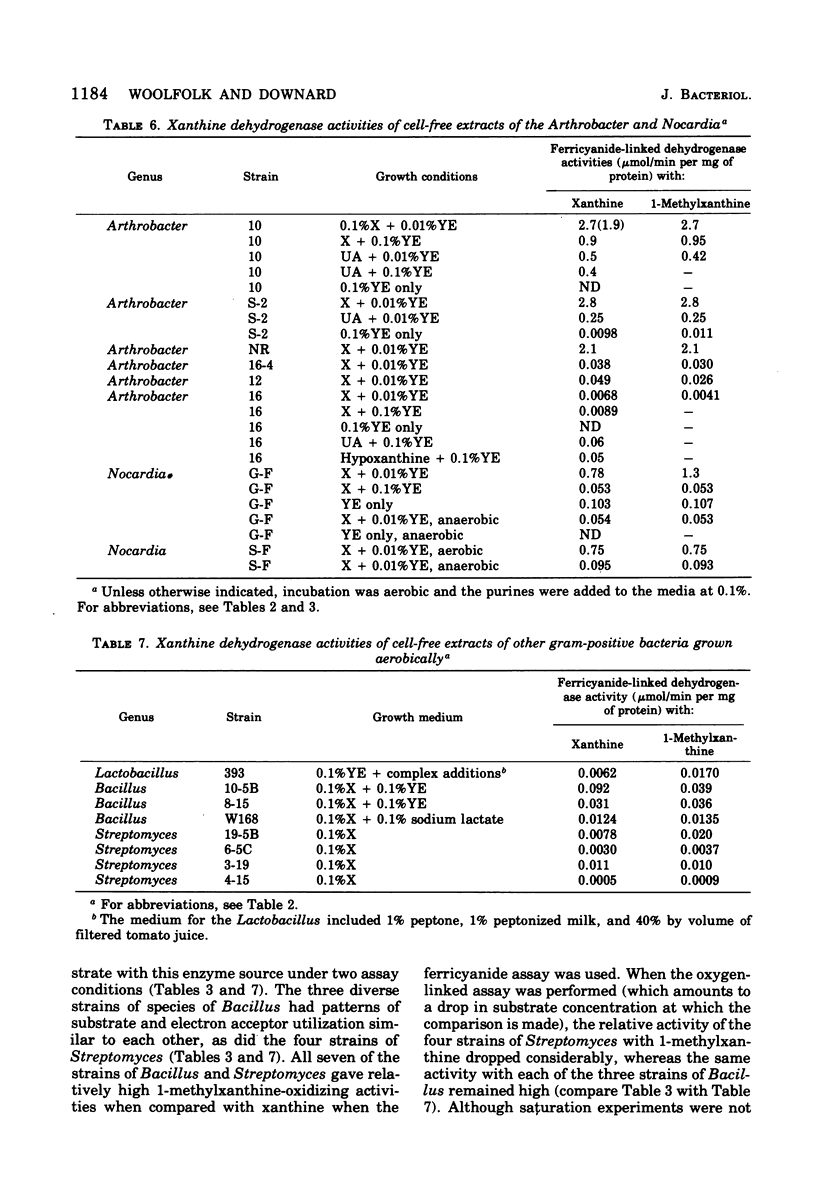
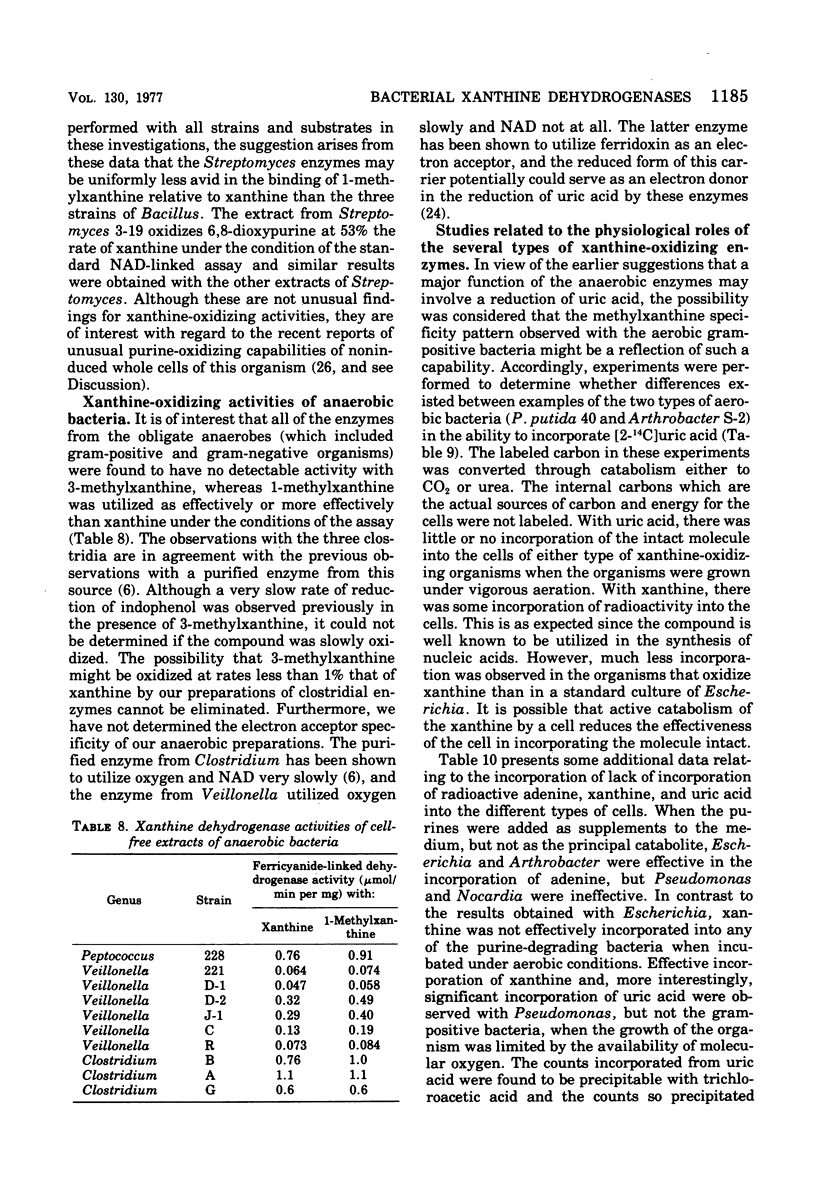
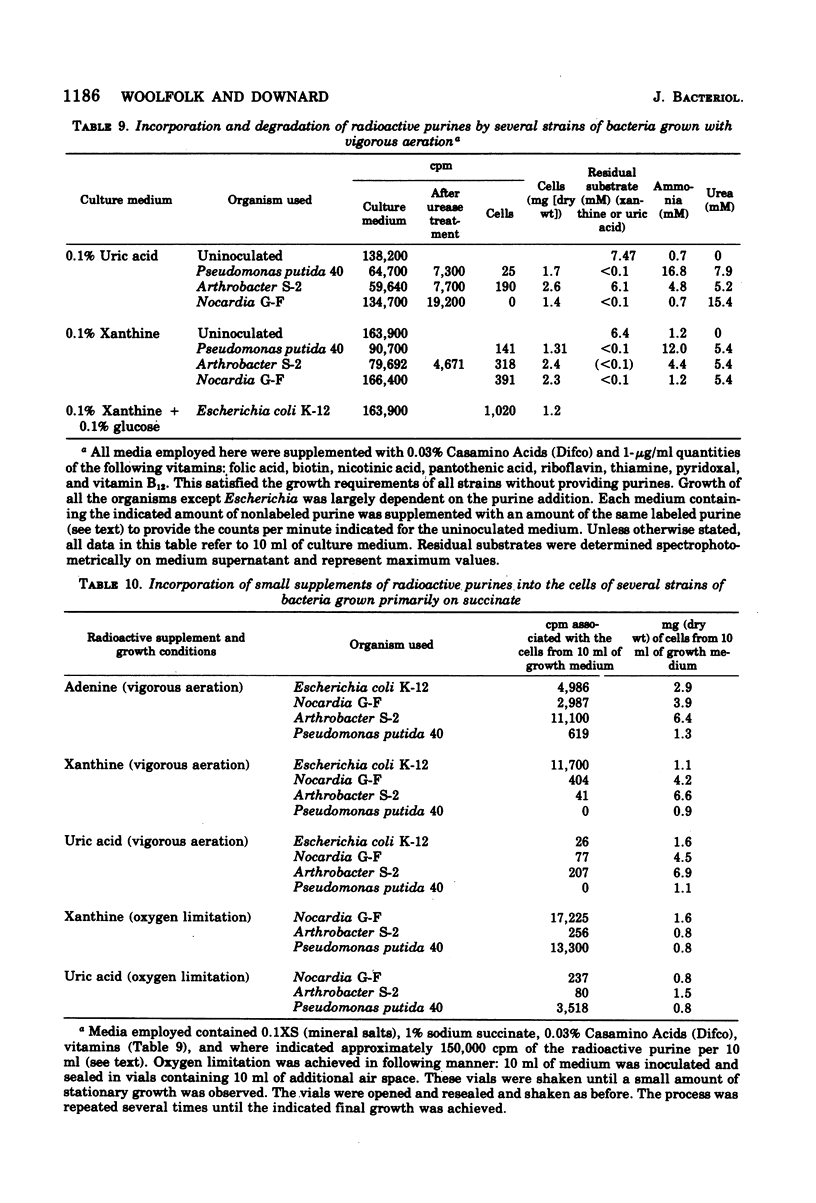
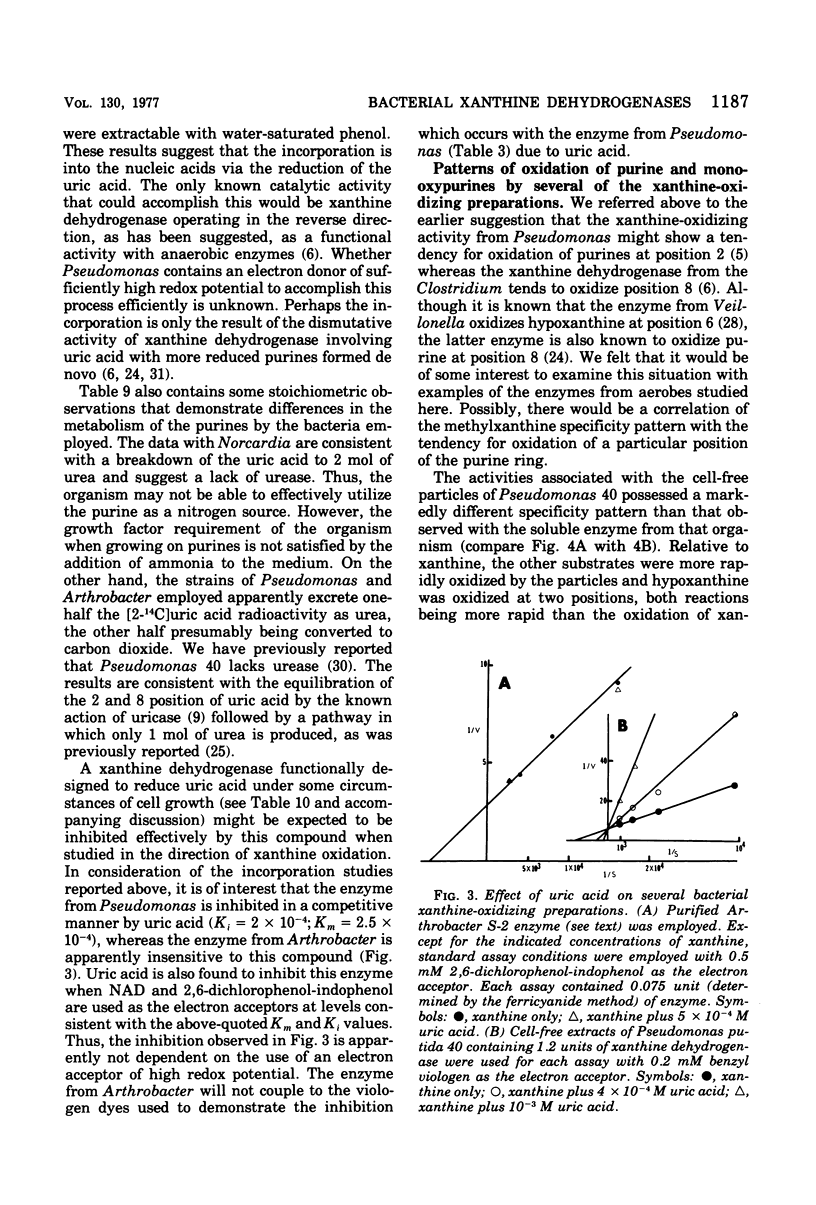
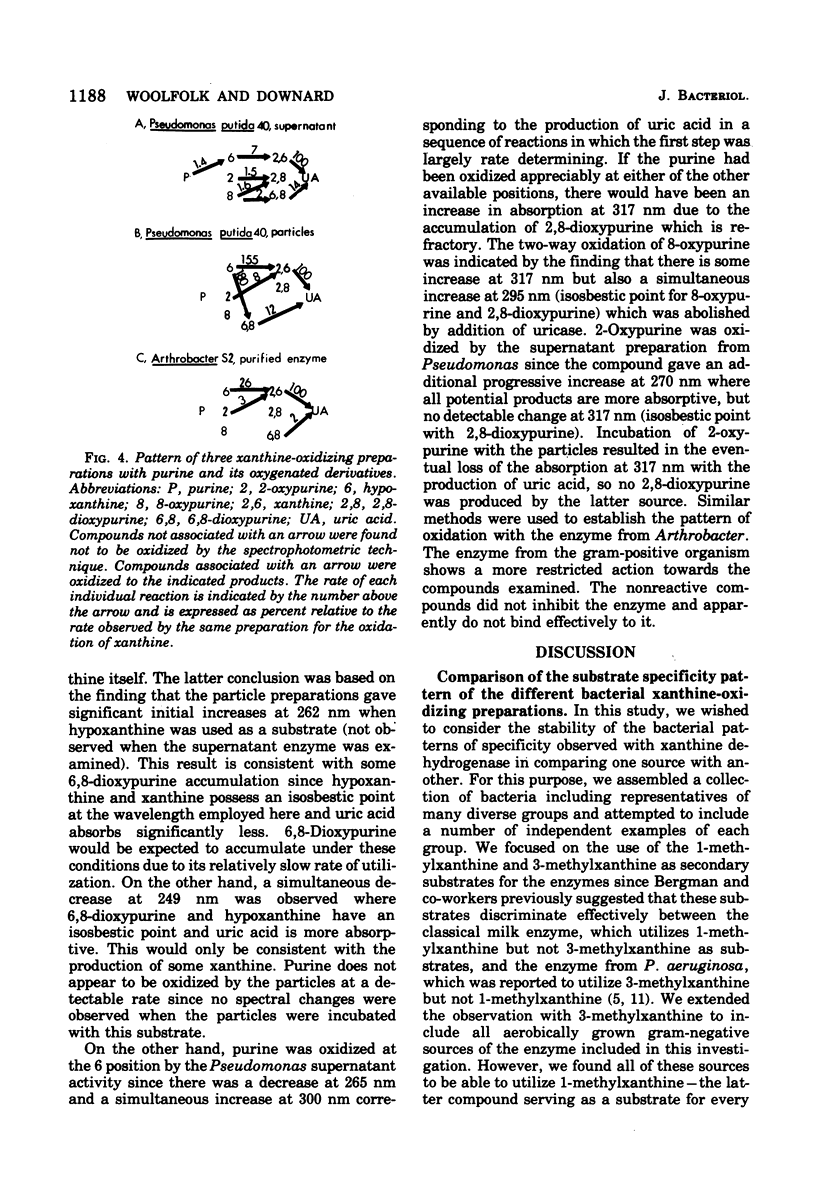
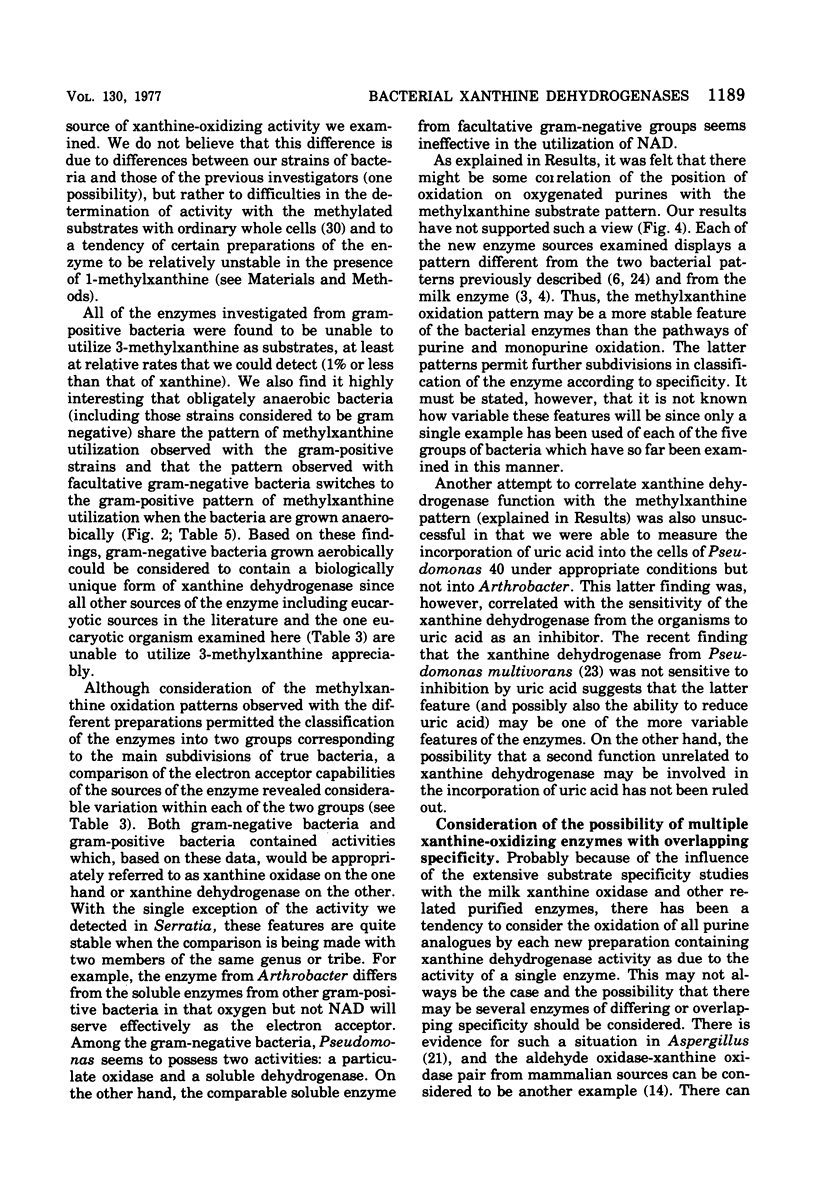
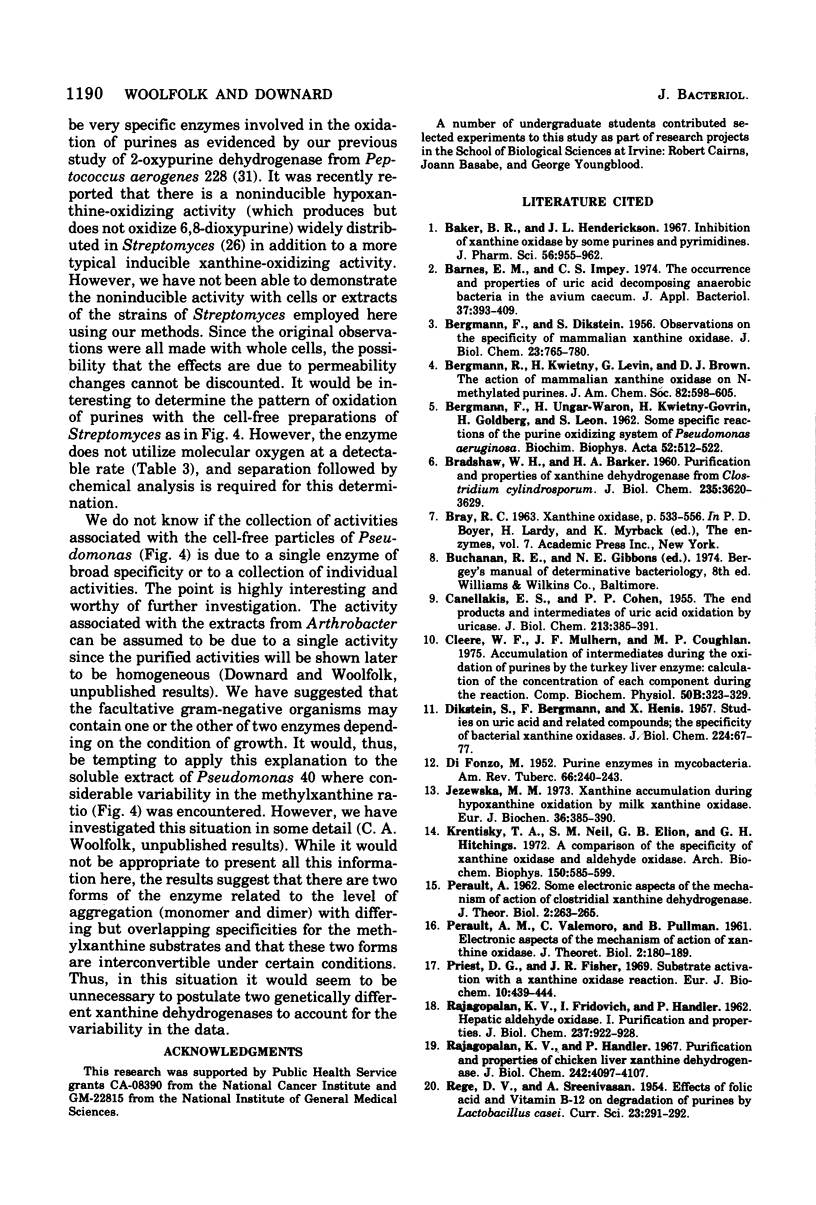
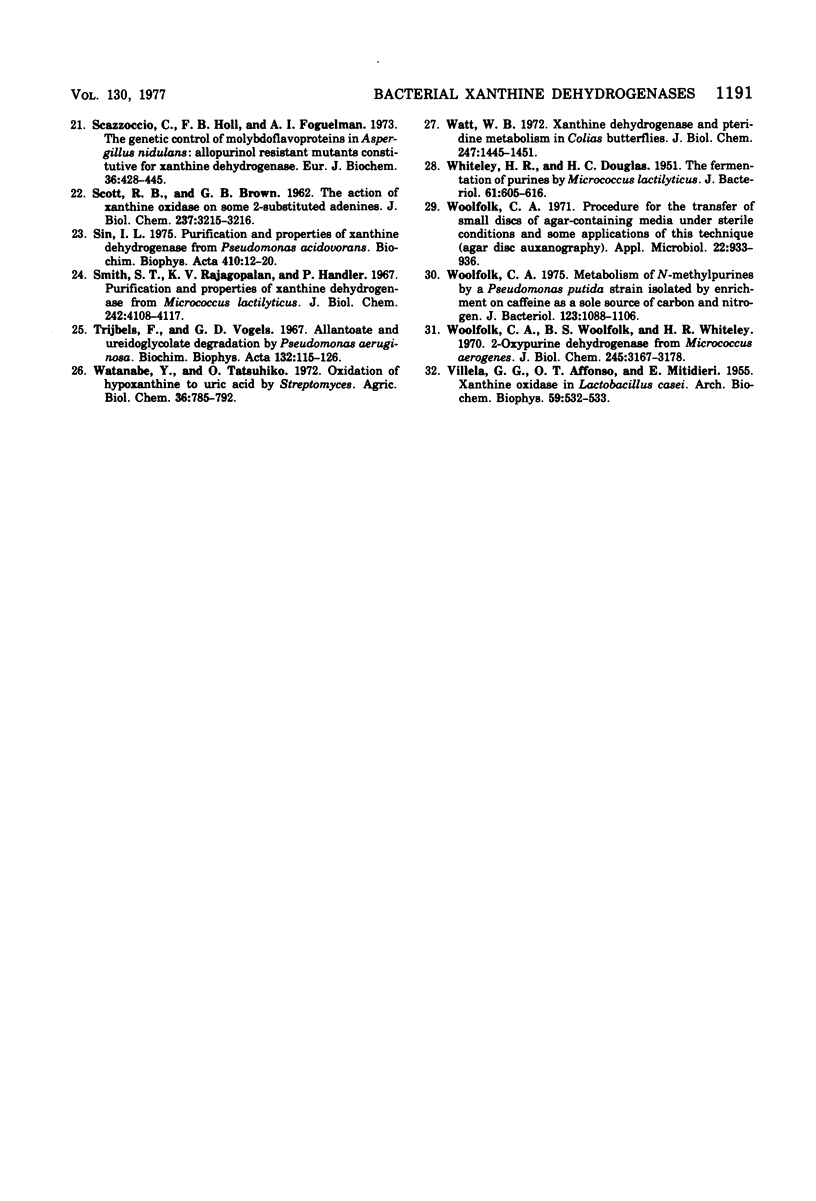
Selected References
These references are in PubMed. This may not be the complete list of references from this article.
- BERGMANN F., DIKSTEIN S., HENIS Y. Studies on uric acid and related compounds. IV. The specificity of bacterial xanthine oxidases. J Biol Chem. 1957 Jan;224(1):67–77. [PubMed] [Google Scholar]
- BERGMANN F., DIKSTEIN S. Studies on uric acid and related compounds. III. Observations on the specificity of mammalian xanthine oxidases. J Biol Chem. 1956 Dec;223(2):765–780. [PubMed] [Google Scholar]
- BERGMANN F., UNGAR-WARON H., KWIETNY-GOVRIN H., GOLDBERG H., LEON S. Some specific reactions of the purine-oxidizing system of Pseudomonas aeruginosa. Biochim Biophys Acta. 1962 Apr 2;55:512–522. doi: 10.1016/0006-3002(62)90984-8. [DOI] [PubMed] [Google Scholar]
- Baker B. R., Hendrickson J. L. Irreversible enzyme inhibitors. XCII. Inhibition of xanthine oxidase by some purines and pyrimidines. J Pharm Sci. 1967 Aug;56(8):955–959. doi: 10.1002/jps.2600560806. [DOI] [PubMed] [Google Scholar]
- Barnes E. M., Impey C. S. The occurence and properties of uric acid decomposing anaerobic bacteria in the avian caecum. J Appl Bacteriol. 1974 Sep;37(3):393–409. doi: 10.1111/j.1365-2672.1974.tb00455.x. [DOI] [PubMed] [Google Scholar]
- CANELLAKIS E. S., COHEN P. P. The end-products and intermediates of uric acid oxidation by uricase. J Biol Chem. 1955 Mar;213(1):385–395. [PubMed] [Google Scholar]
- Cleere W. F., Mulhern J. F., Coughlan M. P. Avian xanthine dehydrogenases. II. Accumulation of intermediates during the oxidation of purines by the turkey liver enzyme: calculation of the concentration of each component during the reaction. Comp Biochem Physiol B. 1975 Feb 15;50(2B):323–329. doi: 10.1016/0305-0491(75)90281-3. [DOI] [PubMed] [Google Scholar]
- DI FONZA M. Purine enzymes in mycobacteria. Am Rev Tuberc. 1952 Aug;66(2):240–243. doi: 10.1164/art.1952.66.2.240. [DOI] [PubMed] [Google Scholar]
- Jezewska M. M. Xanthine accumulation during hypoxanthine oxidation by milk xanthine oxidase. Eur J Biochem. 1973 Jul 16;36(2):385–390. doi: 10.1111/j.1432-1033.1973.tb02923.x. [DOI] [PubMed] [Google Scholar]
- Krenitsky T. A., Neil S. M., Elion G. B., Hitchings G. H. A comparison of the specificities of xanthine oxidase and aldehyde oxidase. Arch Biochem Biophys. 1972 Jun;150(2):585–599. doi: 10.1016/0003-9861(72)90078-1. [DOI] [PubMed] [Google Scholar]
- PERAULT A. M., VALDEMORO C., PULLMAN B. Electronic aspects of the mechanism of action of xanthine oxidase. J Theor Biol. 1961 Apr;1:180–189. doi: 10.1016/0022-5193(61)90044-3. [DOI] [PubMed] [Google Scholar]
- Priest D. G., Fisher J. R. Substrate activation with a xanthine oxidase reaction. An alternative to dismutation as an explanation in the chicken liver system. Eur J Biochem. 1969 Oct;10(3):439–444. doi: 10.1111/j.1432-1033.1969.tb00708.x. [DOI] [PubMed] [Google Scholar]
- RAJAGOPALAN K. V., FRIDOVICH I., HANDLER P. Hepatic aldehyde oxidase. I. Purification and properties. J Biol Chem. 1962 Mar;237:922–928. [PubMed] [Google Scholar]
- Rajagopalan K. V., Handler P. Purification and properties of chicken liver xanthine dehydrogenase. J Biol Chem. 1967 Sep 25;242(18):4097–4107. [PubMed] [Google Scholar]
- SCOTT R. B., BROWN G. B. The action of xanthine oxidase on some 2-substituted adenines. J Biol Chem. 1962 Oct;237:3215–3216. [PubMed] [Google Scholar]
- Scazzocchio C., Holl F. B., Foguelman A. I. The genetic control of molybdoflavoproteins in Aspergillus nidulans. Allopurinol-resistant mutants constitutive for xanthine-dehydrogenase. Eur J Biochem. 1973 Jul 16;36(2):428–445. doi: 10.1111/j.1432-1033.1973.tb02928.x. [DOI] [PubMed] [Google Scholar]
- Sin I. L. Purification and properties of xanthine dehydrogenase from Pseudomonas acidovorans. Biochim Biophys Acta. 1975 Nov 20;410(1):12–20. doi: 10.1016/0005-2744(75)90203-x. [DOI] [PubMed] [Google Scholar]
- Smith S. T., Rajagopalan K. V., Handler P. Purification and properties of xanthine dehydroganase from Micrococcus lactilyticus. J Biol Chem. 1967 Sep 25;242(18):4108–4117. [PubMed] [Google Scholar]
- Trijbels F., Vogels G. D. Allantoate and ureidoglycolate degradation by Pseudomonas aeruginosa. Biochim Biophys Acta. 1967 Jan 11;132(1):115–126. doi: 10.1016/0005-2744(67)90197-0. [DOI] [PubMed] [Google Scholar]
- VILLELA G. G., AFFONSO O. R., MITIDIERI E. Xanthine oxidase in Lactobacillus casei. Arch Biochem Biophys. 1955 Dec;59(2):532–533. doi: 10.1016/0003-9861(55)90521-x. [DOI] [PubMed] [Google Scholar]
- WHITELEY H. R., DOUGLAS H. C. The fermentation of purines by Micrococcus lactilyticus. J Bacteriol. 1951 May;61(5):605–616. doi: 10.1128/jb.61.5.605-616.1951. [DOI] [PMC free article] [PubMed] [Google Scholar]
- Watt W. B. Xanthine dehydrogenase and pteridine metabolism in Colias butterflies. J Biol Chem. 1972 Mar 10;247(5):1445–1451. [PubMed] [Google Scholar]
- Woolfolk C. A. Metabolism of N-methylpurines by a Pseudomonas putida strain isolated by enrichment on caffeine as the sole source of carbon and nitrogen. J Bacteriol. 1975 Sep;123(3):1088–1106. doi: 10.1128/jb.123.3.1088-1106.1975. [DOI] [PMC free article] [PubMed] [Google Scholar]
- Woolfolk C. A. Procedure for the transfer of small discs of agar-containing media under sterile conditions and some applications of this technique (agar disc auxanography). Appl Microbiol. 1971 Nov;22(5):933–936. doi: 10.1128/am.22.5.933-936.1971. [DOI] [PMC free article] [PubMed] [Google Scholar]
- Woolfolk C. A., Woolfolk B. S., Whiteley H. R. 2-oxypurine dehydrogenase from Micrococcus aerogenes. I. Isolation, specificity, and some chemical and physical properties. J Biol Chem. 1970 Jun;245(12):3167–3178. [PubMed] [Google Scholar]


